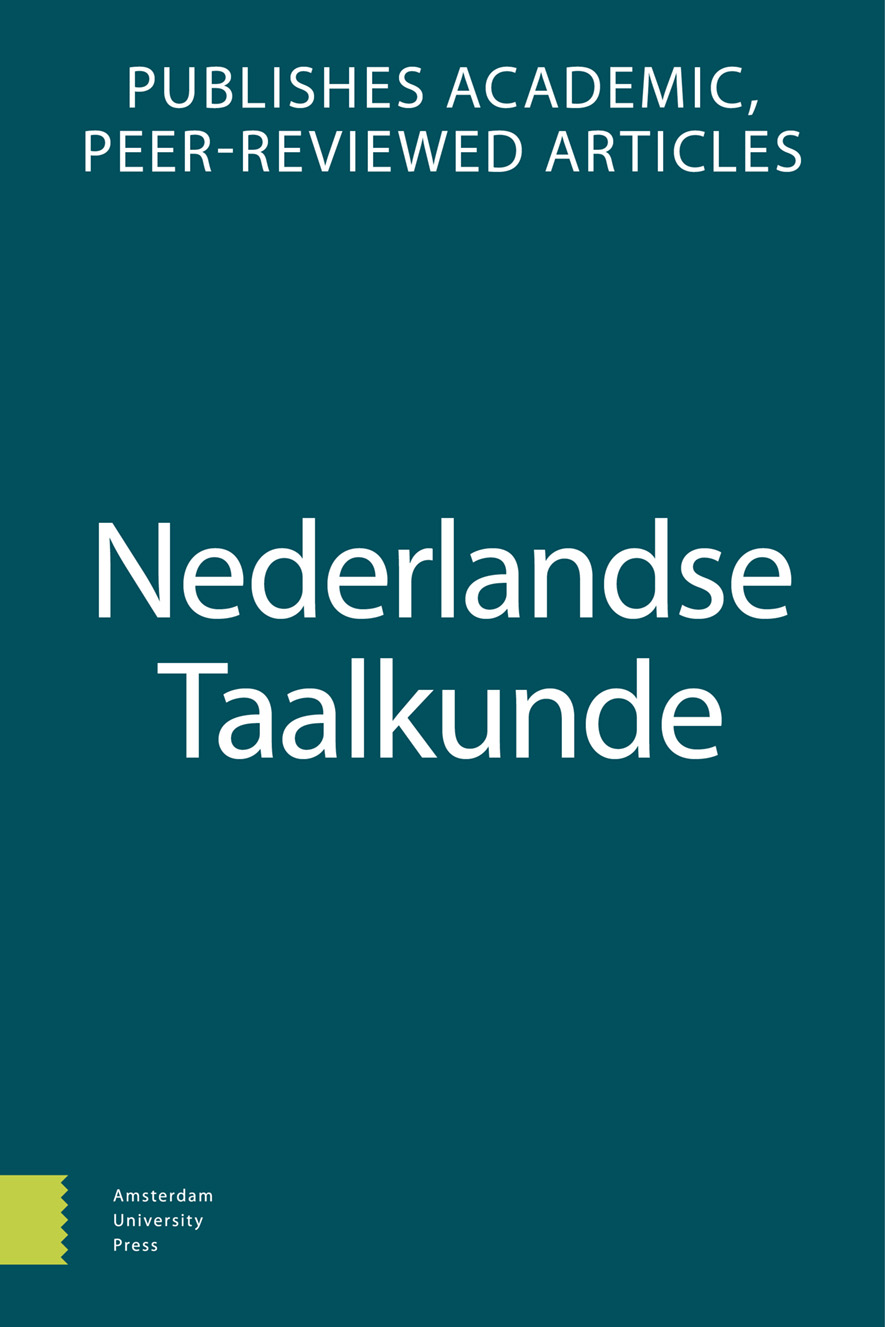- Home
- A-Z Publications
- Nederlandse Taalkunde
- Previous Issues
- Volume 15, Issue 2, 2010
Nederlandse Taalkunde - Volume 15, Issue 2, 2010
Volume 15, Issue 2, 2010
Language:
English
-
-
Van boekenbonnen en feëverhale - De tussenklank e(n) in Nederlandse en Afrikaanse samenstellingen: vorm of betekenis?
More LessAuthors: Neijt Anneke, Schreuder Robert & Jansen CarelCompounds in Dutch and Afrikaans may contain a linking sound resembling the plural suffix [ə] or [ən]. This linking sound can be spelled in Dutch as e or en, a difference which previous research has shown to affect the interpretation of left hand members of compounds regarding their plurality. Here, we look at the existence of the reverse effect: do semantic clues about number influence preferences for a linking sound in novel Read More
-
-
-
Dus vooraan of in het midden? - Over vorm-functierelaties in het gebruik van connectieven
More LessSentential adverbs often show variation in their positioning. Such variation is claimed to reflect form-function interactions. This paper presents a case study of Dutch dus ‘so’ that sheds more light on such interactions. Dus-fragments from the 13th, 16th, and 20th century were analyzed to find out whether any meaning changes and syntactic developments occurred, and whether form-function interactions could be found. Result Read More
-
-
-
We kunnen dus wel conclusies trekken over dus!
More LessRespondent Gert De Sutter plaatst mijn onderzoek in een rijtje klinkende namen (Diessel, Bresnan, Arnold). Eervol, maar tegelijkertijd plaatst hij een voorbehoud bij mijn conclusies. Graag maak ik van de gelegenheid gebruik om mij te verweren tegen de drie centrale kritiekpunten in zijn respons: 1) mijn (ontbrekende) definitie van de term discourse marker, 2) de wijze van sampling in mijn corpusonderzoek en 3) het nut en de noo Read More
-
-
-
Anaforische middelen voor topicverschuiving
More LessThird person pronouns that require an antecedent beyond their immediate clause build discourse coherence. There are two kinds of such pronouns in Dutch, p(ersonal)-pronouns and d(emonstrative)-pronouns. They make different contributions to the discourse coherence and the present paper deals with that difference. The d-pronouns have an obviative effect. That is, they have an antecedent restriction. They require a non-topi Read More
-
-
-
Ontwikkelingen in de linkerperiferie van de nominale constituent
More LessThis article argues that the Modern Dutch noun phrase (NP/DP) has acquired a new slot in its left periphery. This slot contains interpersonal modifiers, like focus particles, modal adverbs and other epistemic modifiers. On the basis of historical corpus inquiry it is shown how this slot has developed and how it has been accommodating more and more complex elements in the course of time. This diachronic evolution has c Read More
-
Most Read This Month
Article
content/journals/13845845
Journal
10
5
false
en

Most Cited Most Cited RSS feed
-
-
Goed of fout
Authors: Hans Bennis & Frans Hinskens
-
- More Less

